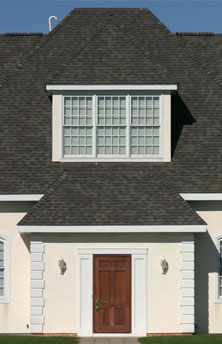New Roofing Technologies
Emerging roofing technologies
Feb 1, 2005
By: Mike Russo
Roofing/Siding/Insulation (RSI)
http://www.rsimag.com/rsi/article/articleDetail.jsp?id=146121
Once again, the roofing industry is going through changes. In the 1980s, it was single plies. This time around it's self-adhered modified bitumen and peel and stick single-ply membranes. The changes this time around are less challenging, but equally important, for roofing installers.
These emerging product technologies are being driven by powerful forces in the marketplace; namely, safety, environmental concerns and a push for "easier" installation. However, some roofing industry experts are viewing these new systems cautiously—as they should—and installers are finding these roofs don't go down quite as simply as shown in manufacturers' application videos.
In January, one major supplier (its name starts with a "G") invited 20 top roofing contractors and consulants to take a closer look at these systems. Specifically, to document on tape, among other things, the most common roofing mistakes made when installing self-adhered modified bitumen, peel and stick single plies, cold-applied modifieds and fleece-back systems. The timing of the meeting couldn't have been better.
Cold-applied modifieds and single-ply fleece-back systems are far from new, and industry experience with these application methods has generally been good. As long as installers adhere (no pun intended) to manufacturers' recommendations on ambient temperature application ranges and adhesive coverage rates, things usually go pretty well.
According to RSI's 2005 State of the Industry Report, the use of cold-applied modifieds has increased dramatically over the years. Two out of three roofing contractors now install modifieds in cold adhesive, and another 12% plan to start this year. Because peel and stick single plies and modifieds are much newer, RSI needs to wait another year before getting accurate market statistics for these newer roofing systems.
What the experts foundThis writer was lucky enough to participate in the group tasked with uncovering application issues involving self-adhered modified bitumen. The bottom line is that no matter how manufacturers are marketing their systems, these are not slap-down-and-run roofing products. This doesn't mean they don't work; they just require more care and attention to detail in some areas of their application. For more information, check out Dick Fricklas' On the Roof column in January.
There wasn't a roof consultant in the room who would even consider using self-adhered modified bitumen as a one-ply system (self-adhered modified over a nailed base sheet). None had specified them on any major job, and the contractors in attendance had limited hands-on experience with these systems. Keep in mind, we were dealing with a pretty conservative group here, most of whom are used to specifying three or four ply, hot or cold applied hybrid modified bitumen systems.
The group also agreed on one other thing: These roofing systems are here to stay, and the industry needs to become intimately familiar with the specification and application limitations of self-adhered modifieds real quick. One contractor-turned-consultant went as far as predicting the eventual demise of traditional hot built-up roofing, and torch and mop down modifieds due to increasing pressure from environmentalists and code groups. He also predicted a learning curve for using self-adhered modifieds, although not as steep as the one the industry climbed when single-ply roofing was first introduced.
The group came up with a number of recommendations, including using chalk lines to properly align the self-adhered sheets and applying trowel grade mastic on tricky end lap details. They also suggested some ways to improve the product during the manufacturing process.
Ironically, while these systems are "clean" and environmentally friendly, they are not quite as easy to install as one would think. For now, installers will need to improvise a bit on the details to ensure a watertight roof.
Mike Russo has been reporting on the roofing, siding and insulation industry for 23 years. He can be reached at (440) 891-2704 or at mrusso@advanstar.com
How can I find out more information?
When you request your free no obligation roofing quote you will receive the Free Insider's Guide to Roofing . Giving you the chance to learn even more about your options and speak with a licensed local home improvement professional in your area
Home | Learning Center | Request Your Free Quote | Articles | Roofing Links | Webmasters

